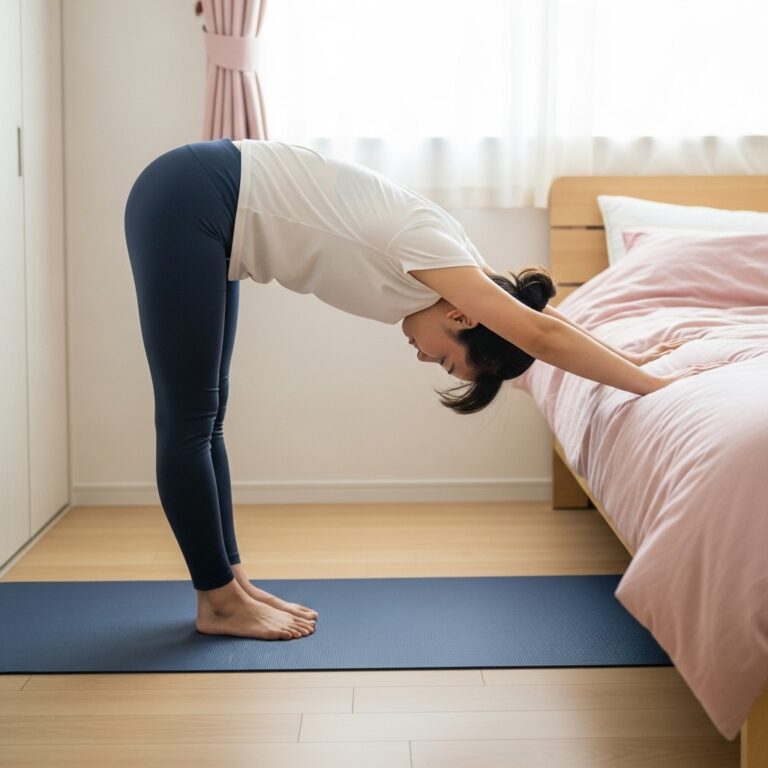FREE SHIPPING OVER $50
The No-Gym Workout That Helped a 35-Year-Old Drop 20 Pounds in 2 Months
Weight loss is a personal journey. For our 35-year-old success story, the decision to ditch the gym was driven by time constraints and a desire for a more natural approach to fitness. The idea was simple: create a home-based workout routine that is both efficient and effective without needing fancy equipment.
By embracing a no-gym workout, our subject discovered that it’s not the environment that makes the difference—it’s the consistency, dedication, and willingness to try new things. This journey isn’t just about shedding pounds; it’s about building a sustainable, healthy lifestyle that boosts energy, improves mood, and enhances overall quality of life.
Key factors in the journey included:
- Commitment: A decision to work out daily despite challenges.
- Adaptability: Tailoring exercises to personal ability and gradually increasing intensity.
- Mindfulness: Focusing on the process rather than just the end result.
In the coming sections, we break down the routine and other lifestyle changes that contributed to a remarkable 20-pound weight loss in just 2 months.
Understanding the No-Gym Workout

The no-gym workout relies on simple, body-weight exercises that can be done anywhere. It does not require any expensive equipment—just your determination and a small space to move. The routine is designed to boost metabolism, build strength, and burn calories through a combination of cardio, strength training, and flexibility work.
The core components include:
- Cardio Bursts:
Short, high-intensity intervals that increase heart rate and improve cardiovascular health. Examples include jumping jacks, high knees, and burpees. - Body-Weight Strength Exercises:
Moves like push-ups, squats, lunges, and planks build muscle and enhance overall strength. These exercises boost metabolism and contribute to a toned physique. - Flexibility and Core Work:
Stretching and core-focused exercises such as yoga poses and abdominal crunches improve balance and posture, while also reducing the risk of injury. - Circuit Training:
Combining different exercises in a circuit ensures that you work multiple muscle groups simultaneously, maximizing calorie burn and improving overall endurance.
Each element plays a critical role. Cardio bursts kickstart fat loss by increasing your heart rate, while strength exercises help preserve muscle mass as you lose weight. Flexibility and core work round out the routine by enhancing stability and ensuring a balanced approach to fitness.
The Daily Routine: A Closer Look
A well-structured daily routine was essential in achieving weight loss without a gym. The following breakdown details the workout plan that our subject followed, ensuring each session was effective and sustainable.
Warm-Up (5-10 minutes)
Warming up prepares your body for the workout, increasing blood flow and reducing the risk of injury. Our subject’s warm-up included:
- Light Jog in Place:
Duration: 2 minutes
Description: Begin by jogging slowly in place to gradually raise your heart rate. - Dynamic Stretches:
Duration: 3-5 minutes
Description: Perform dynamic stretches such as arm circles, leg swings, and torso twists to loosen up the muscles. - Jumping Jacks:
Duration: 1-2 minutes
Description: Finish the warm-up with a set of jumping jacks to fully activate the cardiovascular system.
Main Workout (30-40 minutes)
The main workout was structured into circuits that combined cardio, strength, and core exercises. Below is an example of one circuit used during the routine:
- Circuit Round (Repeat 3-4 Times):
- Burpees: 15 Reps
Description: A full-body exercise that targets multiple muscle groups, including the chest, arms, and legs, while boosting heart rate. - Push-Ups: 15 Reps
Description: A body-weight exercise that strengthens the chest, shoulders, and triceps. - Squats: 20 Reps
Description: Focuses on the lower body, particularly the quadriceps, hamstrings, and glutes. - Plank: Hold for 45 Seconds
Description: Strengthens the core muscles, including the abdominals and lower back. - Lunges: 15 Reps Per Leg
Description: Enhances balance and builds leg strength by working the quadriceps and glutes. - High Knees: 30 Seconds
Description: A cardio move that increases heart rate and improves leg speed and coordination.
- Burpees: 15 Reps
Cool-Down (5-10 minutes)
After the main workout, cooling down helps your body recover and reduces muscle soreness. The cool-down includes:
- Light Walking: Gradually lower your heart rate with a slow walk around your workout area.
- Static Stretching: Stretch all major muscle groups, focusing on the legs, arms, and core. Hold each stretch for at least 20-30 seconds.
- Deep Breathing Exercises: Practice deep breathing to relax and signal the body to enter recovery mode.
This routine was performed daily, with slight variations to prevent monotony. Consistency is key, and by following this structured plan, our subject maximized calorie burn and built lean muscle over the 2-month period.
Nutrition and Lifestyle Adjustments
No workout plan is complete without considering nutrition. Alongside the no-gym workout, our subject made several dietary and lifestyle adjustments that accelerated the weight loss process.
Balanced Diet Essentials
The weight loss journey was supported by a diet rich in whole foods, lean proteins, and plenty of fruits and vegetables. Some key dietary strategies included:
- Portion Control: Keeping an eye on portion sizes helped manage calorie intake without feeling deprived.
- Protein-Rich Meals: Consuming lean proteins such as chicken, fish, tofu, and legumes aided muscle repair and increased satiety.
- Complex Carbohydrates: Choosing whole grains over refined carbs provided sustained energy throughout the day.
- Healthy Fats: Incorporating sources of healthy fats like avocados, nuts, and olive oil helped maintain hormonal balance.
- Hydration: Drinking plenty of water throughout the day was crucial for metabolism and recovery.
Lifestyle Changes
Apart from dietary adjustments, simple lifestyle changes played a significant role:
- Regular Sleep Schedule: Getting 7-9 hours of quality sleep each night helped the body recover and regulate hunger hormones.
- Stress Management: Incorporating mindfulness techniques such as meditation and deep breathing helped reduce stress-induced eating.
- Active Daily Habits: In addition to the structured workouts, our subject made small changes like taking the stairs, walking more, and stretching during breaks. These habits increased daily calorie burn and improved overall mobility.
These nutritional and lifestyle strategies not only supported the workout routine but also enhanced energy levels and overall well-being.
Staying Motivated: Tips and Tricks
Sticking to a weight loss routine requires discipline and motivation. Here are some practical tips that helped our subject stay on track:
- Set Clear Goals: Define short-term and long-term goals to measure progress. Tracking these goals motivates you to keep going even on challenging days.
- Keep a Workout Journal: Recording workouts, meals, and how you feel each day helps you recognize improvements and stay accountable.
- Find a Workout Buddy: Exercising with a friend or family member can make workouts more enjoyable and add a layer of accountability.
- Mix Up the Routine: Rotating exercises or trying new variations keeps the routine exciting and prevents plateaus.
- Celebrate Small Wins: Recognize and reward yourself for reaching milestones. This could be a new workout outfit or a relaxing day off.
- Stay Positive: Focus on progress rather than perfection. Positive self-talk and visualization techniques can help overcome setbacks.
Maintaining motivation is as important as the physical routine. These tips ensure that you not only start strong but also finish strong.
Results and Reflections: Real-Life Impact
After 2 months of consistent effort, our 35-year-old saw a significant drop of 20 pounds. But the benefits went beyond just the numbers on the scale. Here are some real-life impacts observed:
- Increased Energy Levels: The daily workout routine boosted overall energy, making everyday tasks easier and more enjoyable.
- Improved Strength and Endurance: Regular body-weight exercises built lean muscle, which in turn increased stamina and improved overall fitness.
- Enhanced Mood and Mental Clarity: Exercise is known to release endorphins. Our subject experienced reduced stress levels and better mental focus throughout the day.
- Better Sleep Quality: With regular physical activity and a balanced diet, the quality of sleep improved significantly, aiding recovery and overall well-being.
- Boosted Self-Confidence: Achieving tangible results in a short time boosted self-esteem and motivated a continued commitment to a healthier lifestyle.
These results underscore the effectiveness of a well-planned, no-gym workout. The journey was not without challenges, but each obstacle was met with determination and adaptability, leading to long-term positive changes.
Conclusion
The no-gym workout routine described in this article demonstrates that you don’t need a fancy gym membership to achieve remarkable weight loss results. Through a combination of body-weight exercises, balanced nutrition, and consistent lifestyle changes, our subject was able to drop 20 pounds in just 2 months.
Remember, the key elements of this success story are consistency, adaptability, and a positive mindset. Whether you’re just starting your fitness journey or looking to shake up your current routine, this approach proves that simple, effective, and affordable workouts can deliver real results.



